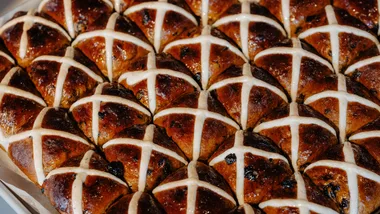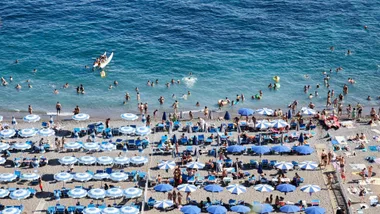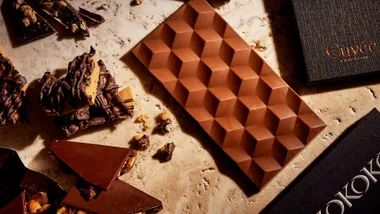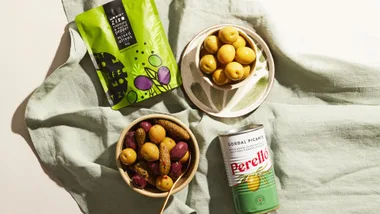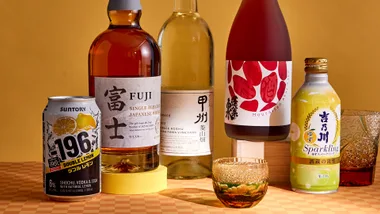Slowly rotating the plate to inspect the layers, I quell my impetuous niece who’s ready, spoon raised, like a cat about to pounce on its prey. I explain that this is the original, legendary tiramisù, which warrants our attention before being devoured.
We are at Le Beccherie in Treviso, an elegant city in Veneto, 50 kilometres, or about 30 minutes by train, from Venice. Perched on stools at a high table near the pass, the only available seats in the busy restaurant, I grab my iPhone and snap away. After several protests and “hurry ups”, we each take a spoonful before harmonising our “mm-mmms” a cappella. Their classic tiramisù is luscious and light, silky yet textured, with a good coffee hit, and a dusting of bitter cacao that’s balanced with the sweet mascarpone cream. Treviso’s traditional tiramisù is made with six specific ingredients: bitter cocoa, coffee, mascarpone, savoiardi or ladyfinger biscuits, egg yolks (no whites) and granulated sugar.
Le Beccherie is widely accepted as the inventor of tiramisù because, in 1972, the restaurant claims it was the first to list it on a menu. However, the origin of the well-loved dessert is somewhat trifled. One legend has it that it was served at a brothel in Treviso after “the act”, to give an energy boost to customers before returning home to their wives. That brothel was called Tre Scalini, which closed in 1958, and it’s said that the salacious nature of tiramisù was a deterrent for any public association. Another is that in Veneto, a version of tiramisù was fed to pregnant women, nursing mothers and sick children to help build up their strength. In the mid-1950s and 1960s, this is what led Le Beccherie to develop the classic tiramisù we know today, and it’s the reason it never contains liqueur.
A fierce feud broke out about a decade ago between neighbouring regions Veneto and Friuli-Venezia Giula that’s still ongoing. The latter lay claim to tiramisù’s origins with evidence dating back to the 1950s, which was subsequently published in the 2016 book translated to Tiramisù – history, curiosities and interpretations of the most-loved Italian dessert.
Regardless, Treviso had already stamped its authority as the genesis of tiramisù. In 2010, Le Beccherie’s tiramisù recipe was filed with a notarial deed with the Italian Academy of Cuisine. In 2011, “Accademia del Tiramisù” was established in Treviso, and it hosts two annual events in the dessert’s honour: the Tiramisù World Cup and Tiramisù Day. The Treviso tourist office states “tiramisù” is one of the world’s top five most recognisable Italian words.
A bookend of the Prosecco region, Treviso lies along the river Sile, home to glamorous white swans and handsome ducks, with canals sans gondole and cute pedestrian bridges decorated with colourful flower boxes. There’s a 1200-metre path along the Renaissance city walls, three museums and portico-lined streets with stylish high street shops, including Benetton’s mega flagship store.
Inside the Venetian walls, the petite pedestrianised historical centre houses a population of 3000, while 85,000 live in the greater municipality. The lure of Treviso, besides being the birthplace of my father, is the seamless synthesis of city vibes with village intimacy with relatively few tourists. Most of the one million low-cost airline passengers who land at its airport each year overlook Treviso in favour of nearby Venice.

It was in our final two days in Treviso that I invented a “tiramisù challenge” to find the city’s best. At Pasticceria Max, the 2021 award-winner for Treviso’s best tiramisù, the bar was set high. Presented in a round individual dish with a single layer of coffee-soaked sponge biscuits topped with piped rounds of sweet mascarpone egg whip, the flavours were pronounced yet performed in perfect symphony.
In an unexpected twist, Antica Pasticceria Nascimben’s own version of tiramisù included overpowering marzipan. Their traditional version was extremely creamy and not to my palate, which was still recovering from the shock of a marzipan mouthful. My accomplice polished them both off with glee. Award-winning Zeus Pizzeria da Laura served a dreamy tiramisù with feather-light sweetened mascarpone cream and harmonious mocha flavours of coffee-soaked sponge biscuits and bitter cacao. The luscious mouthfeel made me involuntarily berate my gorging niece to be a better sharer.
We intentionally ordered a light lunch at refined Trattoria Toni del Spin to save room for, you guessed it. Their tiramisù’s creaminess was light, and a delight, with notes of coffee and chocolate offset by the correct amount of sweetness. The prettiest café in Treviso, Camelia Bakery, has an entrance adorned with flowers, yet its tiramisù came in a brown paper cup. The pronounced cacao and smooth, soft cream were missing a coffee punch. The human hoover disguised as a 16-year-old girl was happy to clean it up.
A voting card for Treviso’s best tiramisù was presented at Gustolia. In their generous slab, the coffee-drenched biscuits and the cream had a lovely flavour, but it was denser than others. I abstained from voting. There were several others we tried, to a total of 14, that were all acceptably delicious, even if unremarkable, each with the commonality of coffee-soaked sponge and sweetened mascarpone cream whipped with eggs. Every venue prided itself with a display of trophies and newspaper cuttings of award-wins pinned to their walls.
Seven serves of tiramisù each day challenged even me, a self-appointed connoisseur, but not the teen tiramisù taster. Her favourite was from Zeus, and mine was a tie between Le Beccherie and Zeus.
When I asked the president of the Tiramisù Academy, Tiziano Taffarello, to explain tiramisù’s appeal, he said, “it’s the most popular dessert in the world because its ingredients excite all the taste receptors that we have on the tongue: the salty with the eggs, the sweet with the sugar and ladyfinger biscuits, the acidity with the coffee, the umami with mascarpone cheese, and bitter with bitter cocoa. It’s a magical recipe.”
Tiramisù perfectly exemplifies Aristotle’s quote “the whole is greater than the sum of its parts”.
Translated to “pick me up”, tiramisù’s history may have many layers, but given that it was largely undiscovered until the 1970s, it has quickly shot to fame to become one of Italy’s greatest culinary legacies, whether it’s a traditional recipe made with just egg yolk or non-traditional with a boozy inclusion.
Three classic tiramisù recipes to try
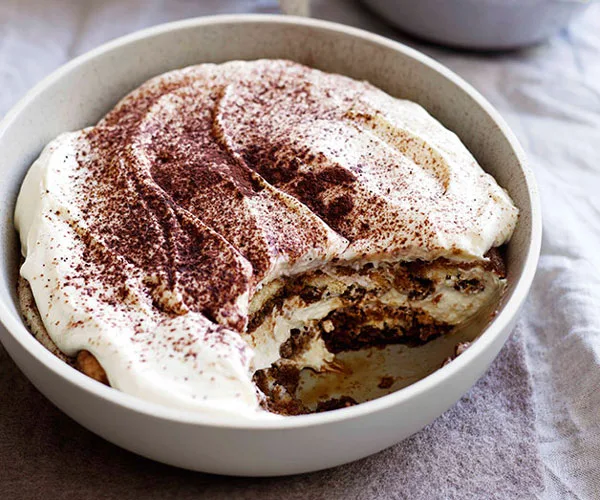
A classic tiramisù

10 William St’s tiramisù

Tiramisù
If you can’t get enough tiramisù, check out our must try tiramisù recipes.

